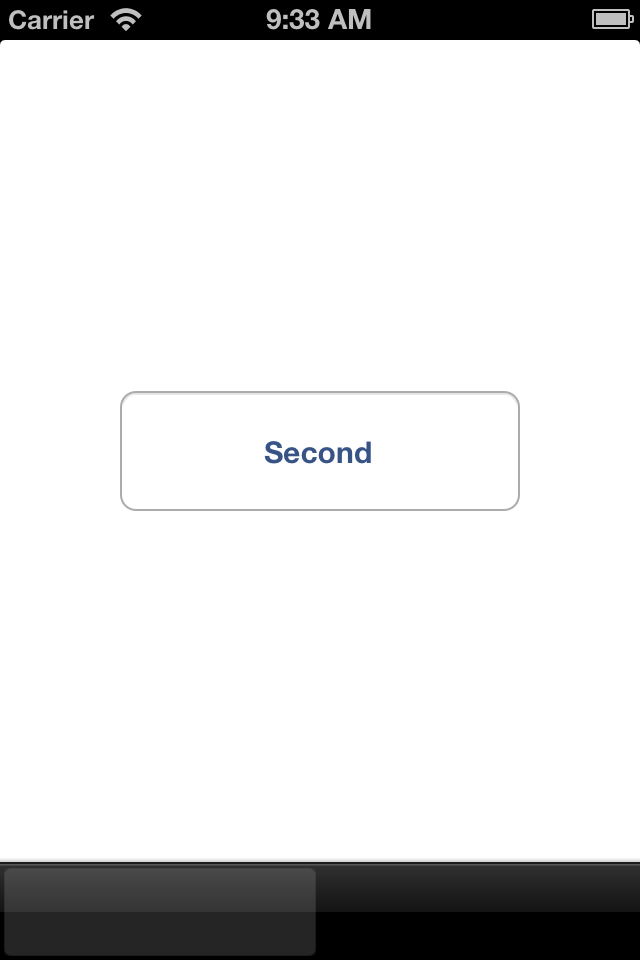http://blog.csdn.net/zfpp25_/article/details/8861221
http://blog.csdn.net/zfpp25_/article/details/8861855
http://blog.csdn.net/zfpp25_/article/details/8861958
http://blog.csdn.net/zfpp25_/article/details/8862040
http://blog.csdn.net/zfpp25_/article/details/8862157
继IOS6之AutoLayout(一)简单讲解了的”上沿“、”下沿“、”左沿“、”右沿“相对布局方法之后,本篇讲解相对布局中的居中。
直接看实现代码:
- UIButton *secondButton = [UIButtonbuttonWithType:UIButtonTypeRoundedRect];
- [secondButtonsetTitle:@"Second"forState:UIControlStateNormal];
- [secondButton sizeToFit];
- secondButton.translatesAutoresizingMaskIntoConstraints =NO;
- [self.viewaddSubview:secondButton];
- NSLayoutConstraint *constraint;
//secondButton的中心点的X坐标与self.view的中心点X坐标距离为零,也就是中心点X坐标重合
- constraint = [NSLayoutConstraint
- constraintWithItem:secondButton
- attribute:NSLayoutAttributeCenterX
- relatedBy:NSLayoutRelationEqual
- toItem:self.view
- attribute:NSLayoutAttributeCenterX
- multiplier:1.0f
- constant:0.0f];
- [self.view addConstraint:constraint];
//secondButton的中心点的X坐标与self.view的中心点Y坐标距离为零,也就是中心点Y坐标重合
- constraint = [NSLayoutConstraint
- constraintWithItem:secondButton
- attribute:NSLayoutAttributeCenterY
- relatedBy:NSLayoutRelationEqual
- toItem:self.view
- attribute:NSLayoutAttributeCenterY
- multiplier:1.0f
- constant:0.0f];
// 指定按钮的宽度为200.0f
- constraint = [NSLayoutConstraint
- constraintWithItem:secondButton
- attribute:NSLayoutAttributeWidth
- relatedBy:NSLayoutRelationEqual
- toItem: nil
- attribute:NSLayoutAttributeNotAnAttribute
- multiplier:1.0f
- constant:200.0f];
- [self.view addConstraint:constraint];
// 指定按钮的高度为60.0f
- constraint = [NSLayoutConstraint
- constraintWithItem:secondButton
- attribute:NSLayoutAttributeHeight
- relatedBy:NSLayoutRelationEqual
- toItem: nil
- attribute:NSLayoutAttributeNotAnAttribute
- multiplier:1.0f
- constant:60.0f];
- [self.view addConstraint:constraint];
以上代码中,指定按钮中心点的相对左边容易理解,但指定宽度和高度的时候,NSLayoutAttributeNotAnAttribute如何理解 ?
下面是官网的解释:
Constraints are of the form "view1.attr1 <relation> view2.attr2 * multiplier + constant". If the constraint you wish to express does not have a second view and attribute, use nil and NSLayoutAttributeNotAnAttribute.
其实也不难理解了。如果有不理解内容可参考IOS6之AutoLayout(一)
转载请保留,原文链接:http://write.blog.csdn.net/postedit/8861855
若发现有不合适或错误之处,还请批评指正,不胜感激。























 399
399

 被折叠的 条评论
为什么被折叠?
被折叠的 条评论
为什么被折叠?








